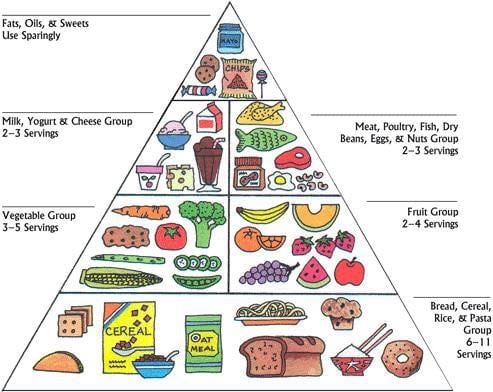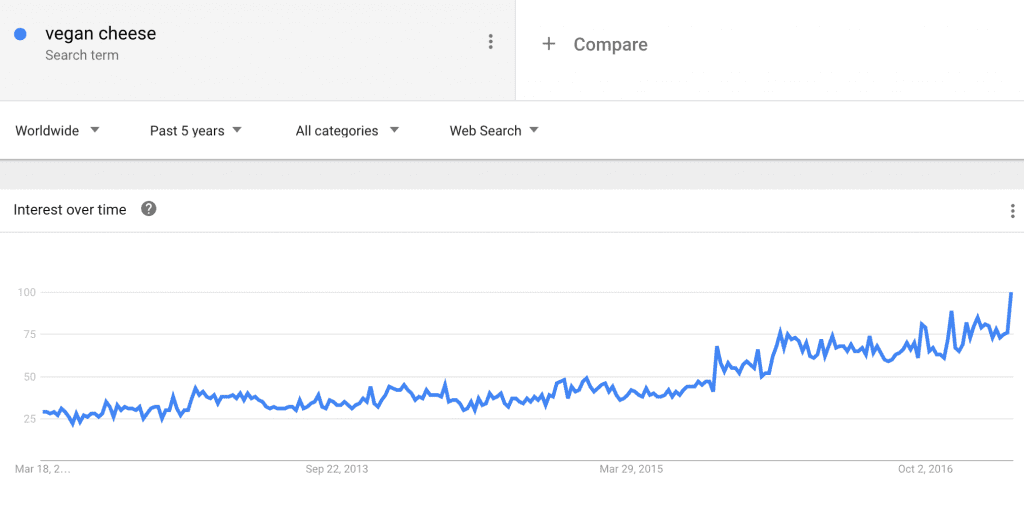 Remember the food pyramid from health class? It wasn’t that long ago that a meal was considered incomplete if portions of meat, dairy and other animal-based proteins were not included as part of the occasion. Nor was it that long ago when diets, like vegetarian and vegan, resided almost exclusively on the fringe.
Remember the food pyramid from health class? It wasn’t that long ago that a meal was considered incomplete if portions of meat, dairy and other animal-based proteins were not included as part of the occasion. Nor was it that long ago when diets, like vegetarian and vegan, resided almost exclusively on the fringe.
Today we are at a tipping point, experiencing a seismic shift in the way people eat and approach their food. By all indications, Americans are ravenous for plant-based foods like they’ve never been before.
Statistics support the trend, and show that more and more consumers are opting to include plant-based foods in their diets:
- In 2015, 26% of Americans chose to eat less meat compared to the previous year. [1]
- By 2016, 55% of Americans were planning to eat more plant-based foods compared to the year before.[2]
- According to Mintel data, 30% of Millennials consume a meat alternative product every day, and 70% consume them at least a few times per week.
- Non-dairy milk sales have skyrocketed, and account for 20% of the “milk” industry up from barely 14% in 2010.[3]
- The market for meat substitutes is expected to reach $5+ billion by 2020.[4]
This rising trend should not come as a surprise. Grocery stores have been flooded with new plant-based products and meat substitutes that are increasingly becoming indistinguishable in texture and taste from their animal-based counterparts. Additionally, the world’s largest food companies have been getting in on the act by making notable acquisitions of companies making plant-based products as well as by applying for new manufacturing process patents that leverage plant-based alternatives. And even fast food restaurant chains are taking very visible steps to expand their menu offerings for meat-free customers.
 Equally telling: Google searches for some of the leading plant-based ingredients and terms further validate this change in behavior. Over the past five years, there have been 40%+ increases in search activity for terms such as “vegan,” “plant-based,” “coconut oil,” “flax seeds,” “veggie burger,” “almond milk,” and “vegan cheese” (among others).
Equally telling: Google searches for some of the leading plant-based ingredients and terms further validate this change in behavior. Over the past five years, there have been 40%+ increases in search activity for terms such as “vegan,” “plant-based,” “coconut oil,” “flax seeds,” “veggie burger,” “almond milk,” and “vegan cheese” (among others).
So, what does it all mean? As a start, it means that the American narrative about food is shifting at warp speed right underneath our feet. It also means that now is the time to start asking some very important questions to ensure the way you market food is shifting equally as fast as the rate of change itself. Here are three to get you started…
- What products can you evolve or launch in this new context?
- Are your “niche” product marketing and communications too niched?
- What stories should you tell that have not been told before?
[1] Nutrition Business Journal. “2015 Food Tribes Report” April, 2015.
[2] Wakefield Research (Survey included 1,015 nationally representative U.S. adults ages 18+ between March 7th and March 11th, 2016, using an email invitation and an online survey)
[3] Packaged Facts. “Dairy and Dairy Alternative Beverage Trends in the U.S., 3rd Edition” April, 2015.
[4] Markets and Markets. “Meat Substitutes Market by Type (Tofu & Tofu Ingredients, Tempeh, Textured Vegetable Protein, Seitan, Quorn), Source (Soy-based, Wheat-based, Mycoprotein), Category (Frozen, Refrigerated), and Region – Global Forecast to 2022” December, 2016


